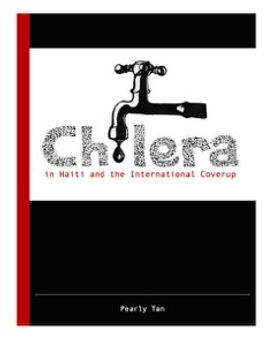Cholera in Haiti
and the International Coverup
by Pearly Tan

He knew the symptoms - fever, cough, diarrhea, and he had them. Fortunately, it was daytime.
The motortaxi ride to the Limbe Cholera Treatment Center would cost 500 gourds (USD$7.70). Nevermind that the trip usually cost just 50 gourds. Just be thankful it wasn't nighttime because then the motortaxi drivers would probably ask for 1000 gourds to drive him there. Afterall, they risked their lives with the sick on their backs, navigating the winding mountain roads.
Colbert Fradin, 46, made it to the nurses in Limbe, Haiti, in time to survive the 72-hour curse that had taken his cousin two years earlier in 2011. He knew the symptoms well because the deadly sickness that had not touched any lives in the last century had suddenly shown up in 2010, infecting almost a million Haitians.
When Fradin's cousin died after visiting her husband who lived in one of the first Haitian departments to be exposed to cholera, he had to dig a hole to bury her by himself. No one helped him out of fear of contracting the mysterious disease.
In October 2010, cholera broke out in Haiti for the first time in over a century. The first case showed up in the remote village of Meille, days after a group of United Nations peacekeeping troops from Nepal arrived.
The Haitian government quickly sought the help of French epidemiologist, Dr. Renaud Piarroux, known for his work in cholera refugee camps. But while researching on the start and spread of the disease that has since killed almost 10,000 Haitians, Dr. Piarroux stumbled upon what he believes is a series of UN maps that was changed gradually over five days, demonstrating intent to cover up their responsibility in the deadly outbreak.
This is the first time he is discussing and sharing the maps he captured before they were replaced in 2010.
This book contains interviews and documents from Dr. Piarroux, the Haitian authorities, doctors and surviving family members of the first cholera patient in Haiti, the Nepali National Contingent commander at that time, scientists whose climate arguments the UN used to back their stance of non-culpability, UN staff and the lawyers who have filed lawsuits on behalf of Haitian cholera victims and their families. This book was solely shot using an iPhone and is best experienced in landscape view.
The full multimedia e-book is available on iTunes in English here for $2.99.
Educators and activists, please contact me for a free copy.
Photographs








